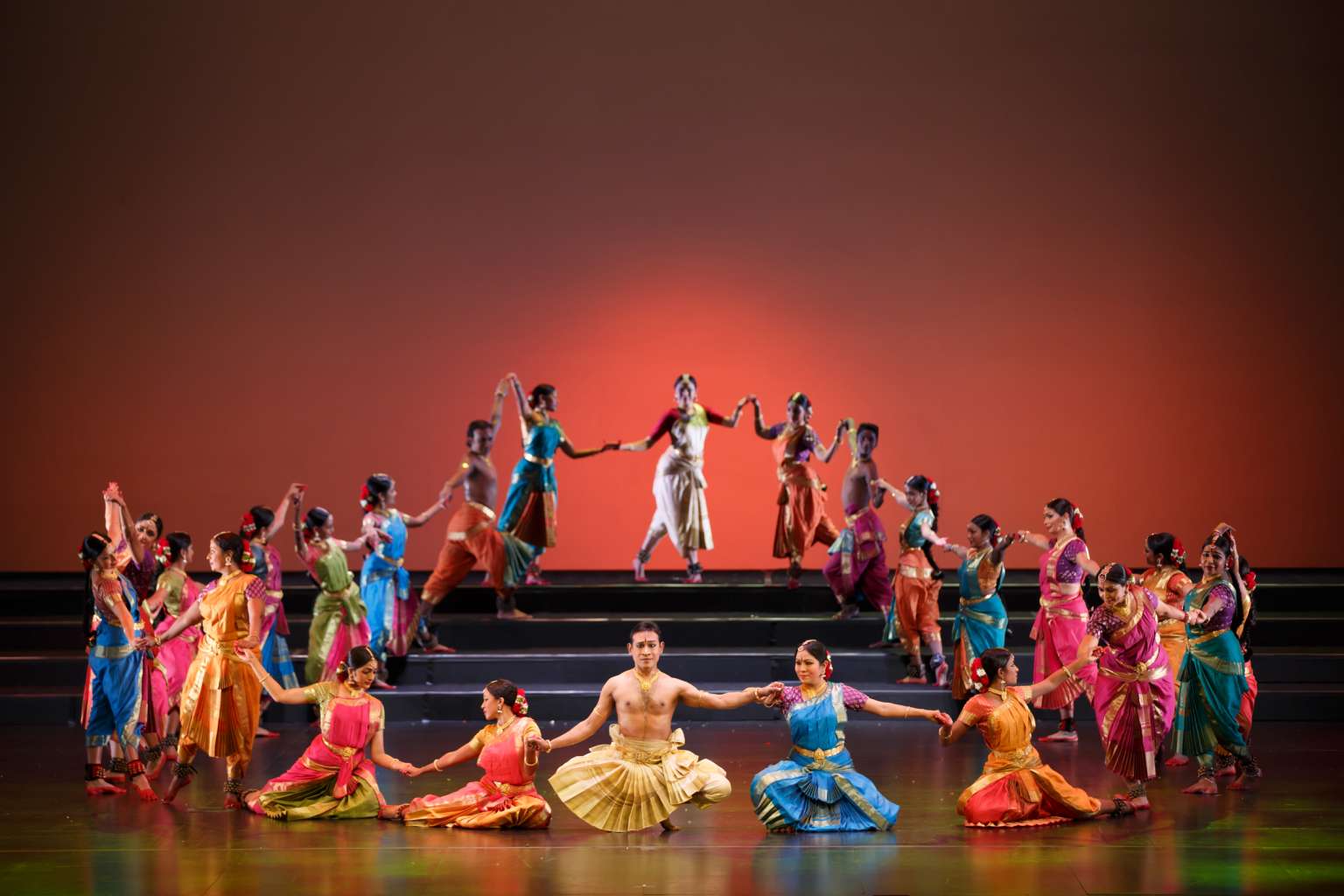Dance review: Singapore talent relegated to sidelines in Viswa Prana: The Cosmic Breath
Sign up now: Get ST's newsletters delivered to your inbox

The dance piece Viswa Prana: The Cosmic Breath, a festival commission bringing together more than 20 dancers from India, Singapore and Malaysia in a unique cross-cultural collaboration.
PHOTO: VISWA PRANA
Nirmala Seshadri
Follow topic:
Esplanade Theatre
Last Saturday
Viswa Prana: The Cosmic Breath, a special commission of the Esplanade's Kalaa Utsavam, was rooted in the Bharatanatyam dance form. Choreographed and performed by Rama Vaidyanathan (India) and Ajith Bhaskaran Dass (Malaysia), the 90-minute work also featured more than 20 local dancers. Artistic direction and script were by Gowri Ramnarayan.
The production set out to explore breath as the basis of life, facilitating interaction with the environment - both internally and externally.
Comprising four parts, Viswa Prana opened with much promise - able dancers executed abstract movements with powerful musical support in the first segment, Prana. The dancers' bodies undulated slowly and gracefully. The rhythm and repetition were suggestive of breath cycles. They then entered in pairs, traversing the stage in repeated movement patterns. This sequence was followed by circular movements of the body that strikingly conveyed the idea of breath.
Sudha Raghuraman stole the show with her effortless singing while T.Ramanan on mridangam (percussion) came across with clarity and perfection. The orchestra was superb although there was an overemphasis on vocals. Some space for instrumental rendition might have offered variation.
The hard work was evident with vibrant rhythmic duets by Vaidyanathan and Dass and well-coordinated group segments. Durga Manimaran, Sreedevy Sivarajasingam and other experienced Singaporean dancers were impressive. The dancers' formations were imaginatively choreographed and enhanced by James Tan's sensitive lighting.
The introduction of the spoken word diluted the abstract quality of the dance. Phrases in the script such as "You give I take, I give you take" and "only God can make a tree" were trite. Instead, there might have been merit if the body had been allowed to speak, especially given that senior dancer Shantha Ratii played the role of narrator. With her excellent dramatic skills and experience she would undoubtedly have breathed life and meaning into her hand gestures and facial expressions.
While the opening saw the group clad in conventional Bharatanatyam costumes in a melange of colours, the second part Anta-Vriksha opened with Vaidyanathan and Dass dressed in cream-coloured traditional costumes with bright green sashes to possibly depict trees. In another segment, yellow "wings" made of cloth were worn to depict bees while dancers representing flowers each had a large red artificial flower on one shoulder. In a form such as Bharatanatyam that is inherently imbued with various representational tools, these attachments appeared superfluous. The script touched on breath in relation to freedom. That the close-fitting traditional costumes contradicted this idea became particularly evident when the dancers began to execute yoga postures.
Given the collective energy of all the dancers on stage, Viswa Prana would have benefited from maintaining a clear focus on the breath/nature relationship rather than on individual technical prowess. "Breathing makes us all equal" said the narrator, which did not appear to sync with the scenario of hero, heroine and background dancers.
With Dass and Vaidyanathan as the archetypal hero and heroine, the local dancers were relegated to the sidelines. The strong Singapore talent on stage could have been better harnessed to enhance the production.

